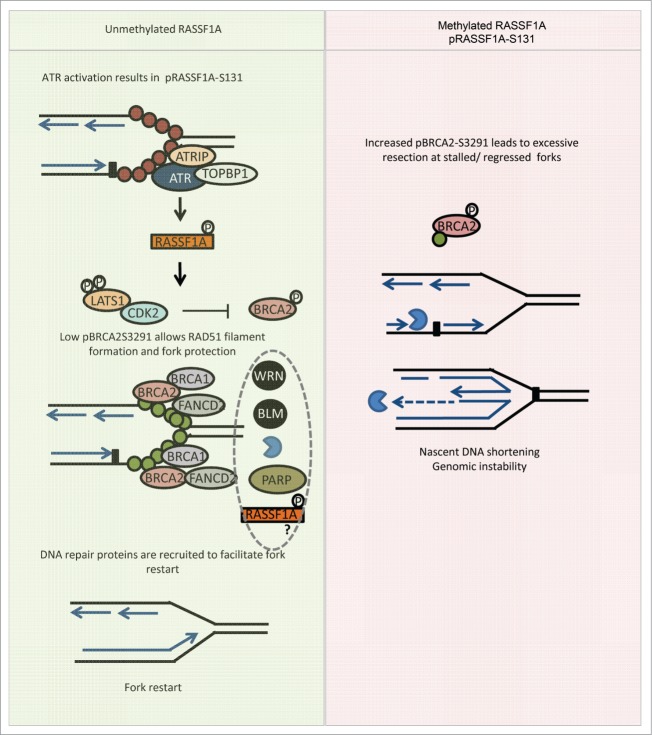Figure 1.
RASSF1A/LATS1/CDK2 pathway upon fork stalling. In response to ATR activation RASSF1A gets targeted at Serine 131 triggering LATS1 phosphorylation and interaction with CDK2. Low levels of pBRCA2-S3291 due to decreased kinase activity of CDK2 fraction bound to LATS1 secure RAD51 filament formation at stalled forks. RAD51 filaments protect nascent DNA from MRE11 nucleolitic activity that is recruited to the fork in parallel with other DNA repair factors to promote fork restart after the removal of the stalling agent. RASSF1A inactivation due to promoter methylation or the SNP at the 133A site leads to increased pBRCA2-S3291, unstable RAD51 filaments and uncontrolled nascent DNA resection. Red circles: RPA, green circles: RAD51, packman: MRE11.

